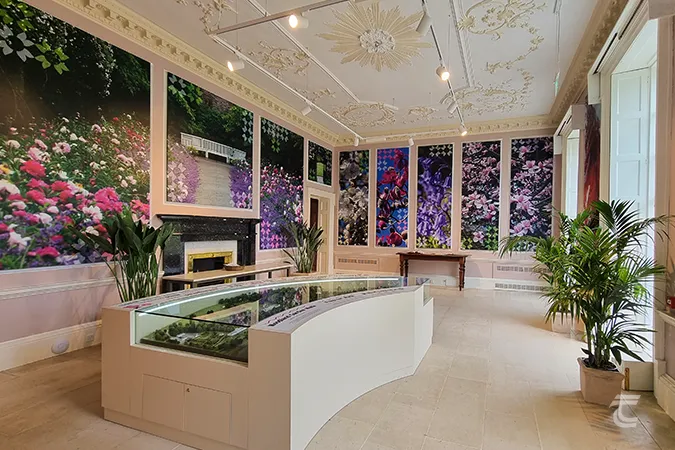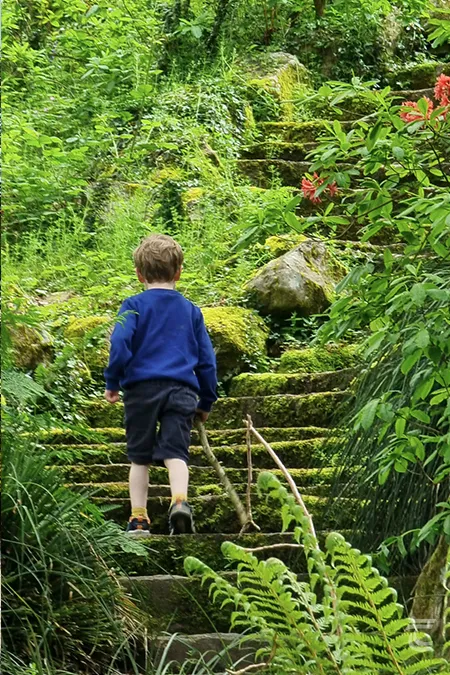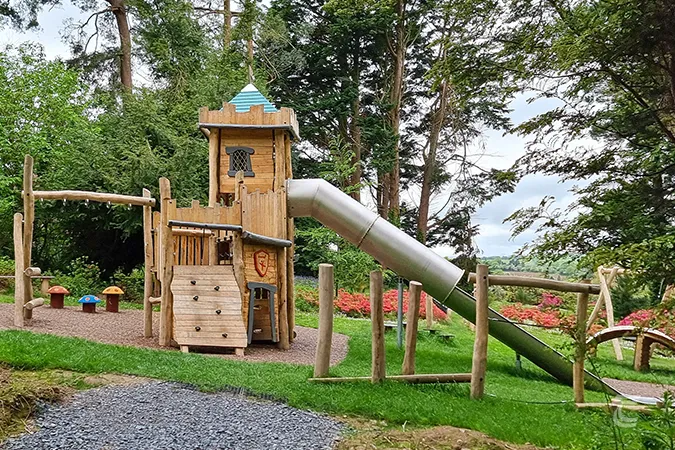Mount Congreve House & Gardens
Mount Congreve House & Gardens were originally constructed on the banks of the River Suir in the mid-18th century for John Congreve (1733–1801), who had served as a High Sheriff of Waterford and as an MP. The Palladian-style mansion was designed by noted architect John Roberts who had previously designed two cathedrals in the city. The Waterford estate was the home of the Congreve family, until the last member of the family, Ambrose Congreve, died aged 104 in 2011. The house and gardens were gifted to the state upon his death. The interior of the house was extensively remodelled in the 1960s when it was inherited by Ambrose. Though he worked mainly in London, managing a gasworks and petrochemical company, he would often return to his Waterford home where he developed his great passion for gardening. He had been inspired from an early age by family friend Lionel de Rothschild, who had developed one of the finest woodland gardens in the world at Exbury, Hampshire. Through his shrewd business acumen, Ambrose became wealthy and Mount Congreve was run on a lavish scale. It is said that Mount Congreve was the last Irish ‘Big House’ that employed liveried servants.
Ambrose began to clear the land for planting in 1955. He appointed the talented Herman Drool as Garden Director in the 1960s and the two worked together to create one of the world’s greatest gardens. Ambrose and Herman both believed in planting things together in a group rather than sparsely across the land, planting his trees alongside those planted by his ancestors from hundreds of years ago. When Ambrose retired in 1983, he focused his efforts on transforming his 110 acres into extensive gardens. He planted thousands of trees, shrubs, plants and flowers. Among the plants that took root in the parkland were over 3000 species of rhododendron, the largest collection in the world. He delighted in creating secret features and hidden vistas that remain a joy to discover. They also created seasonal wonders. One of the walks is lined with more than 200 magnolia trees, which spectacularly bloom into life around St Patrick’s Day every year.
For practical information about visiting this site Click Here
Mount Congreve House & Gardens were originally constructed on the banks of the River Suir in the mid-18th century for John Congreve (1733–1801), who had served as a High Sheriff of Waterford and as an MP. The Palladian-style mansion was designed by noted architect John Roberts who had previously designed two cathedrals in the city. The Waterford estate was the home of the Congreve family, until the last member of the family, Ambrose Congreve, died aged 104 in 2011. The house and gardens were gifted to the state upon his death. The interior of the house was extensively remodelled in the 1960s when it was inherited by Ambrose. Though he worked mainly in London, managing a gasworks and petrochemical company, he would often return to his Waterford home where he developed his great passion for gardening. He had been inspired from an early age by family friend Lionel de Rothschild, who had developed one of the finest woodland gardens in the world at Exbury, Hampshire. Through his shrewd business acumen, Ambrose became wealthy and Mount Congreve was run on a lavish scale. It is said that Mount Congreve was the last Irish ‘Big House’ that employed liveried servants.
Ambrose began to clear the land for planting in 1955. He appointed the talented Herman Drool as Garden Director in the 1960s and the two worked together to create one of the world’s greatest gardens. Ambrose and Herman both believed in planting things together in a group rather than sparsely across the land, planting his trees alongside those planted by his ancestors from hundreds of years ago. When Ambrose retired in 1983, he focused his efforts on transforming his 110 acres into extensive gardens. He planted thousands of trees, shrubs, plants and flowers. Among the plants that took root in the parkland were over 3000 species of rhododendron, the largest collection in the world. He delighted in creating secret features and hidden vistas that remain a joy to discover. They also created seasonal wonders. One of the walks is lined with more than 200 magnolia trees, which spectacularly bloom into life around St Patrick’s Day every year.
For practical information about visiting this site Click Here

Mount Congreve House • Waterford
Mount Congreve Gardens

The Temple • Mount Congreve House & Gardens
Ambrose was celebrated in his lifetime for his skills and services to horticulture. He was awarded thirteen gold medals awards for his garden at the Chelsea Royal Horicultural Society Garden Show, and in 2001 he won the gold medal for a ‘Great Garden of the World’ from the Botanic Gardens of Boston, Massachusetts. Ambrose passed away while attending the Chelsea Flower Show in London in 2011. Before he died, he had already picked out his final resting place. Both Ambrose, and his wife who had passed in 1995, are buried below the elegant classical temple in the gardens. The temple overs Ambrose’s favourite view over the River Suir, and bears the inscription: ‘Light and shade by turn, but love always’. The gardens at Mount Congreve are a living testament to Ambrose’s vision, and the work of his colleagues and his forebears. The gardens can be enjoyed along a varied network of pathways, that lead past waterfalls, a Chinese pagoda, a classical temple, a wildflower meadow, a bluebell walk and a charming walled garden. There is also a fine playground for children, which also provides a welcome bench for the grown-ups to rest.
Mount Congreve House & Gardens have recently reopened following a programme of conservation and restoration. As well as the trails through the lovely gardens, visitors can learn a little more about the story inside one of the rooms of Mount Congreve house itself. There is also a fine café and shop, that specialises in local produce from Waterford. On a fine day in spring or early summer in particular, it makes for a wonderful family day out. If you have small children with you, it is also well worth taking a trip on the Suir Valley Railway, a small steam train that runs along the base of the gardens alongside the Waterford Greenway.

The Temple • Mount Congreve House & Gardens
Upper left: the small exhibition inside Mount Congreve House • Lower left: the playground • Right: exploring the trails in the gardens
Top: the small exhibition inside Mount Congreve House • Middle: exploring the trails in the gardens • Bottom: the playground
Mount Congreve House & Gardens Visitor Information
A beautiful place to explore for all the family, especially in the spring or early summer.
Explore more sites in Ireland’s Ancient East



